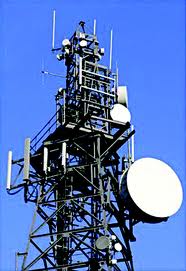Africa’s vibrant telco sector is set for a bumper year in 2024 as it expands operations and broadens service offerings to meet the needs of an increasingly digital-savvy customer base. Industry projections estimate the Africa telco sector will grow by $2.24-billion between 2020 and 2024, with longer-term growth expected to be powered by the rollout of high-speed 5G connectivity and a growing suite of complementary services, specifically in the financial services sector. In conversation with telco executives throughout East, West and Southern Africa over the past few weeks, a number of common challenges have emerged. Telcos are seeking to safeguard current revenue streams through improved downstream visibility, especially over their B2B partners.
At the same time, a slew of new customer-facing services and innovations hold the promise for greater profitability over the long term. This will require bold action – if telcos are not willing to take risks to drive greater innovation, there are inevitably new upstarts that will, claiming market and revenue share in the process. As African telcos try to strike a balance between higher profitability and better revenue protection, these are the key trends they should take note of in 2024: In telco markets across the continent, from Kenya to Ivory Coast to Tanzania and Swaziland, operators rely heavily on dealers or resellers to drive sales and service customer needs. But a lack of digitalisation has left many telcos with little visibility over their B2B channels, creating challenges with inventory management, revenue projections and cost management. The emergence of new technology platforms and tested systems to provide greater downstream efficiency and visibility will transform telcos’ ability to leverage their dealer channels for strategic advantage. While there may be some cultural resistance to greater digitalisation, telcos could use incentives – such as discounts – to get dealers on board.
This may also unlock significant revenue opportunities for B2B partners who can leverage digital capabilities to utilise a broader range of products and services and better meet customer needs. Once their digitalisation efforts are complete, telcos can enable a far richer suite of products and services, driving higher levels of customer experience. This can take the form of tailored financial services such as insurance products or mobile money, as well as emerging innovations such as Buy Now, Pay Later (BNPL). The key is to integrate these services at the point of sale to ensure a quick and seamless customer experience. Considering the growing regulatory requirements in several African countries, telcos should ensure their customer-facing technology can meet KYC requirements to enable the delivery of new services. Ideally, telcos should seek point of sale solutions that boast efficient transactional flows and that can cater to the varied operational requirements of Africa’s telco industry, with a rich list of preloaded features and modules.
While there are still holdouts in all African markets, most consumers are shifting away from feature phones to more function-rich smartphones. Industry data indicates feature phone volumes will decline from 66.3 million in 2019 to only 43.1 million by 2028. The adoption of smartphones will also speed up the rollout of eSIMs, which hold significant benefits for telcos and their efforts at delivering a richer suite of value-added services to their subscriber base. This growth will be driven mainly by a younger user base hungry for access to social media platforms and the benefits of Africa’s burgeoning e-commerce sector. Expect telcos to run extensive promotional campaigns on social media to lure younger users on to smartphones, from where they can deliver a rich suite of services to drive greater revenue and profitability.

